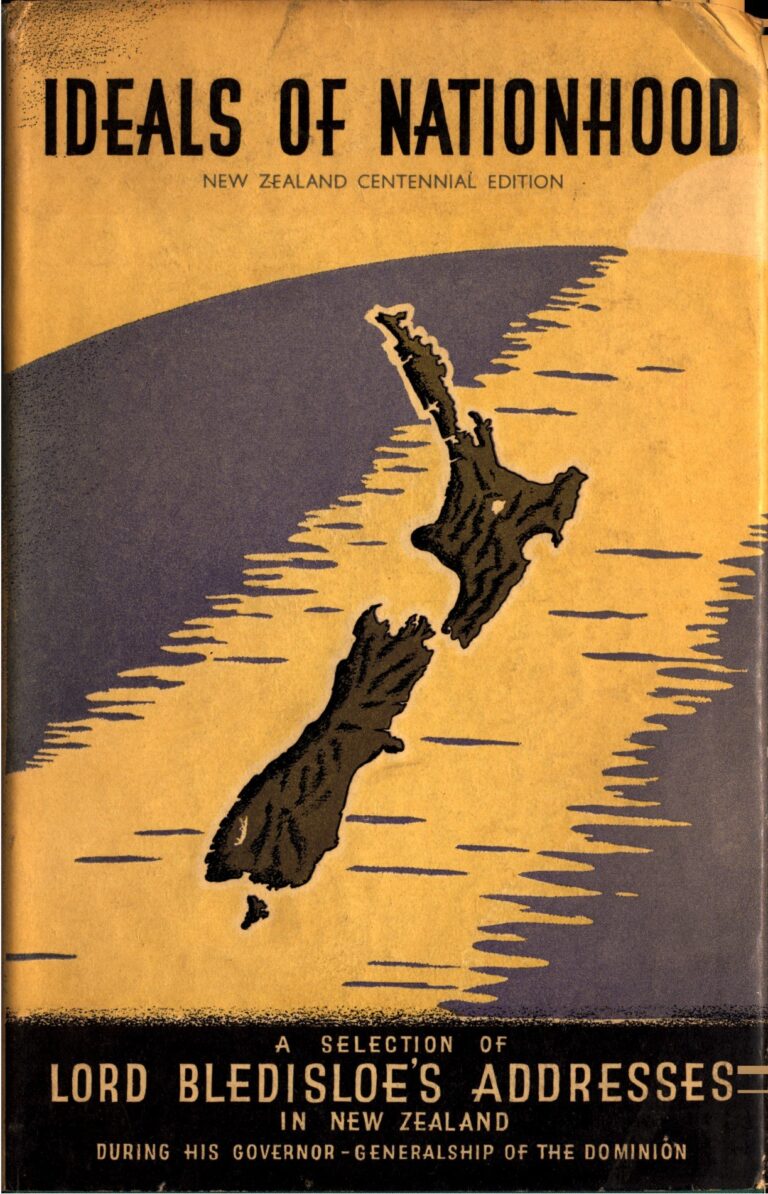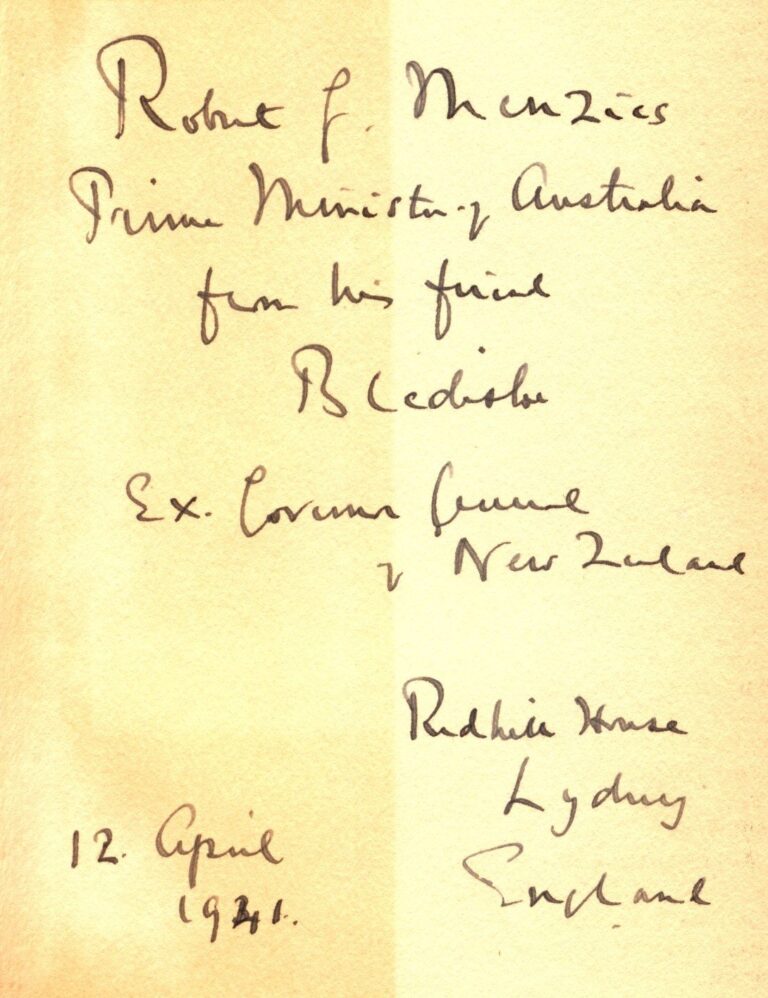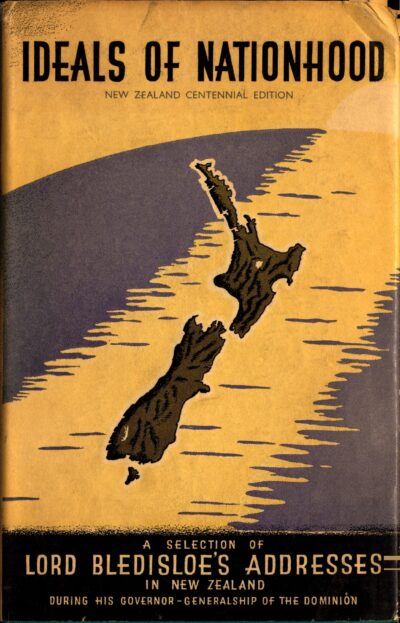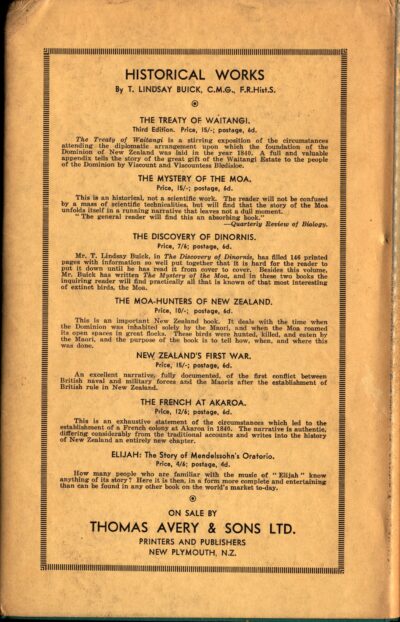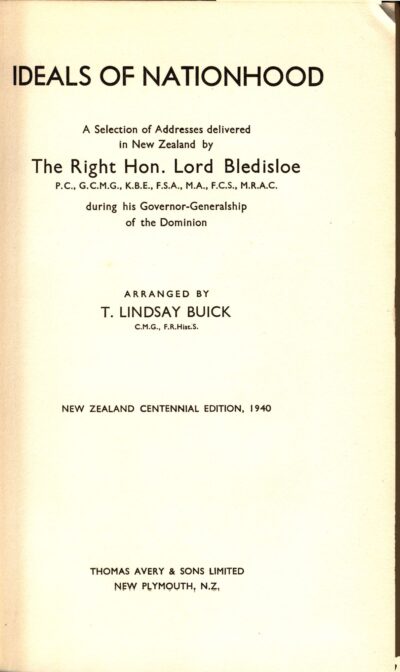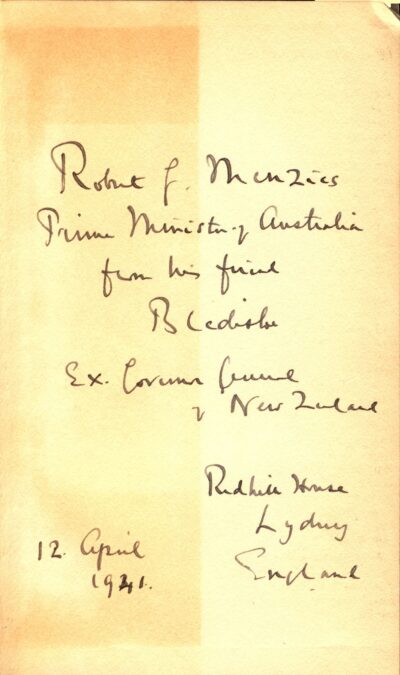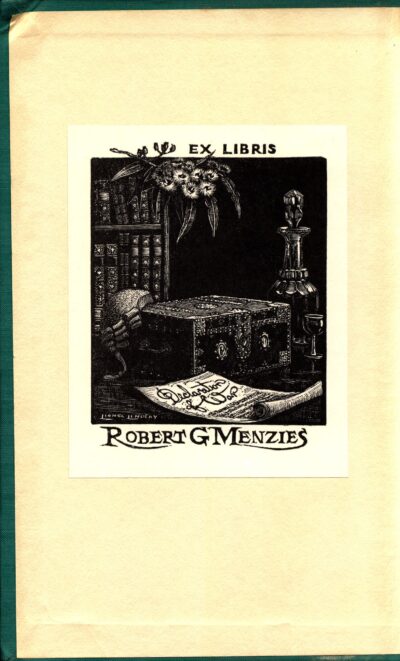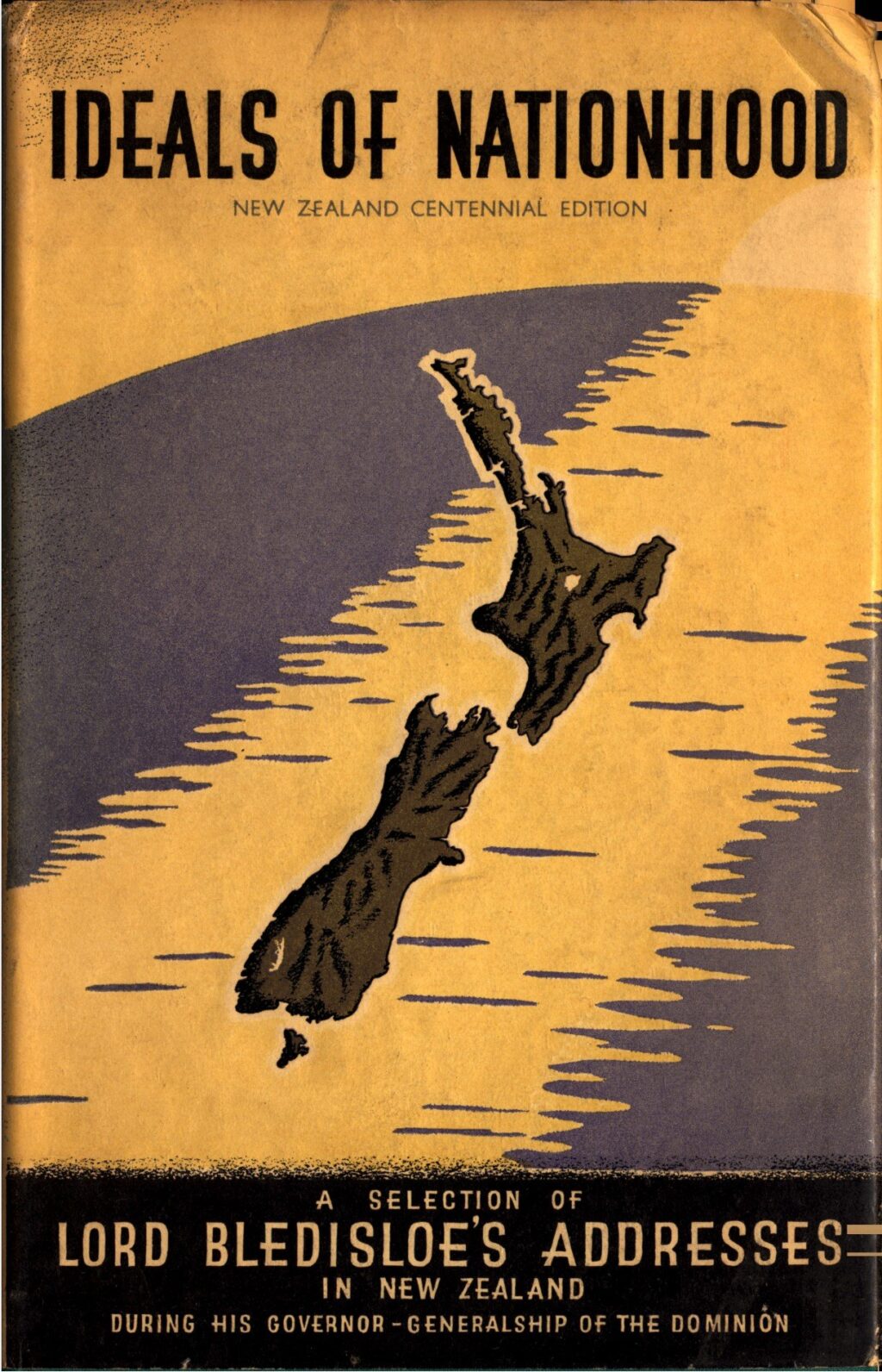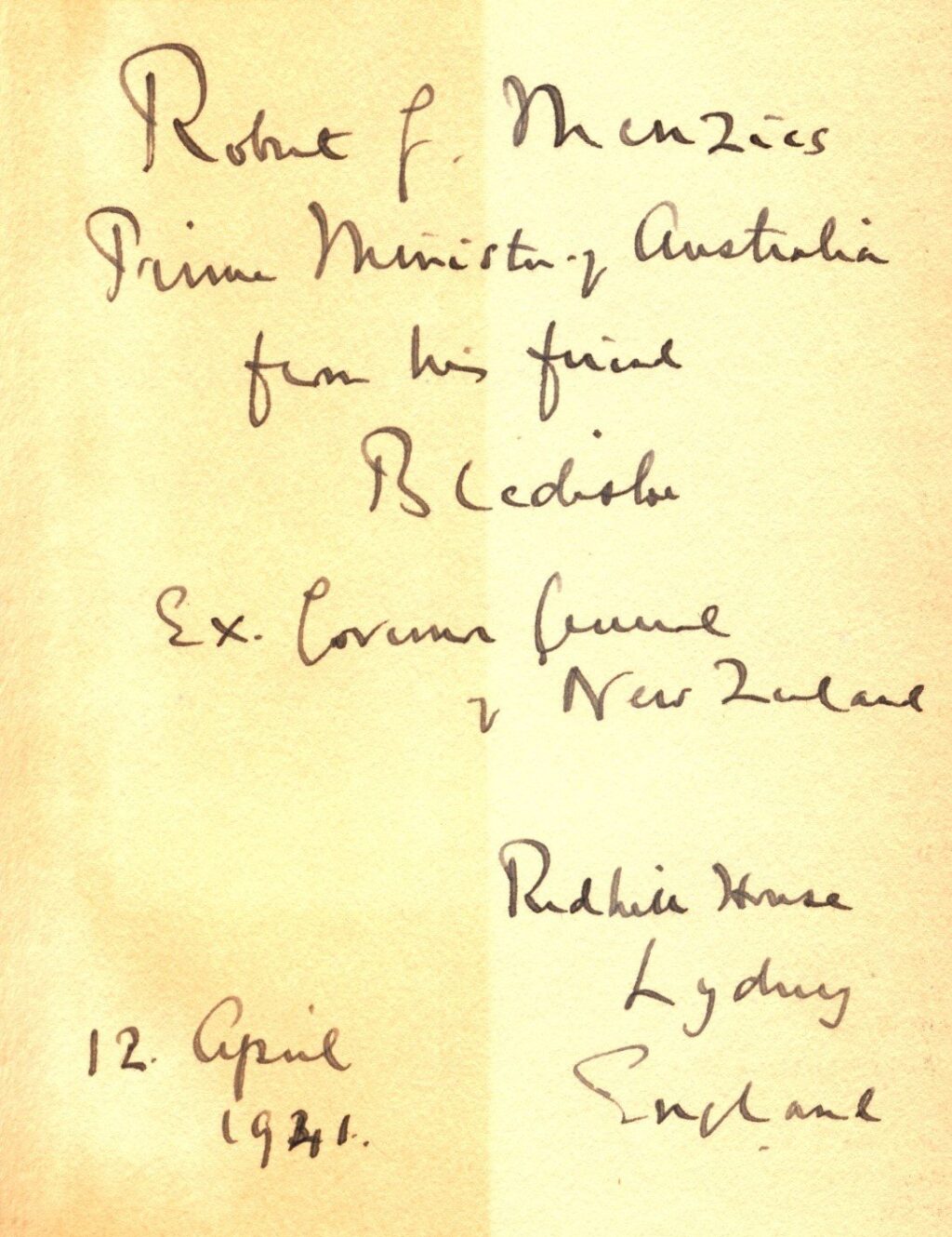Lord Bledisloe, Ideals of Nationhood (1940)
Lord Bledisloe was the Governor General of New Zealand between 1930 and 1935, and his name has since become famous for its attachment to the ‘Bledisloe Cup’ of annual rugby union matches between Australia and New Zealand.
Born as Charles Bathurst in London on 21 September 1867, he was the son of a wealthy barrister and attended both Eton and Oxford. Though Bathurst received a law degree and was called to the Bar by the Inner Temple in 1892, he also studied at the Royal Agricultural College, Cirencester, and would be a prominent advocate for agricultural interests for the rest of his life. In 1910 he was elected as a Conservative MP, and during the First World War he became Parliamentary Secretary to the Ministry of Food, charged with ensuring Britain had adequate supplies of sugar.
In 1918 he was elevated to the peerage as Baron Bledisloe, and thereafter he served as Parliamentary Secretary for the Ministry of Agriculture and Fisheries between 1924 and 1928. Appointed Governor General of New Zealand amidst the height of the Great Depression, he won the public’s sympathy by personally insisting that his salary be cut by 30% in line with economies in the public service. This cut-back would prove significant enough that Bledisloe would have to use his private income to ensure he could still fulfill all of his vice-regal duties. He proved to be an outspoken Governor General, frequently delivering forceful addresses which would form the content of Ideals of Nationhood, and he ruffled some feathers by insisting that the press print his speeches in full and unedited.
Apart from donating the Bledisloe Cup – the large, specially designed and crafted silver trophy that has been given out to the winner of the annual trans-Tasman rugby series since 1931 – Bledisloe’s most significant legacy was that he made a significant positive impact on the relationship between New Zealand’s Māori and non-Māori populations. The Dictionary of New Zealand Biography records that:
‘Perhaps the Bledisloes’ most important and enduring action in New Zealand was their purchase of the site where the Treaty of Waitangi was signed in 1840. The property, which included James Busby’s house and 1,000 acres of adjacent land, was presented to the nation in May 1932 as a national memorial. The couple subsequently donated £500 to launch an appeal for the restoration of the Treaty House. The first ceremony to mark the signing of the treaty on 6 February took place in 1934, when a large number of people gathered from all parts of the country for the laying of the foundation stone for a new Māori meeting house. Until then, Pākehā New Zealanders had taken little interest in the site or the treaty. The Bledisloes’ initiatives marked the beginning of a process of rediscovery on the part of Pākehā and a broadening awareness among Māori… Bledisloe also made a significant contribution to the national recognition of the Māori King movement. He developed an enduring friendship with King Korokī and Te Puea Hērangi, and his easy acceptance of the title ‘king’ helped remove the reticence about using it in official circles. His public comments were notable, moreover, in neither patronising nor romanticising Māori.’
Bledisloe would have first met Robert Menzies in October 1934 when Menzies was first sworn in as federal Attorney General. Bledisloe happened to be visiting Canberra at the time, and Australia’s Governor General Isaac Isaacs hosted him for a vice-regal dinner in the evening after the swearing in ceremonies. With Bledisloe returning to Britain after his term expired, their next run in was likely in 1936 during negotiations over Pacific Shipping. As a member of the House of Lords, Bledisloe took it upon himself to act as an advocate of New Zealand interests, and these happened to frequently overlap with those of Australia, which Menzies was then in Britain to represent. The two men became quite close friends, and during Menzies’s wartime visit to Britain he would stay overnight at Bledisloe’s home. As was his habit, Menzies used his personal film camera to document the occasion, and it was also when Bledisloe gave him a copy of Ideals of Nationhood with the inscription:
‘Robert G. Menzies, Prime Minister of Australia from his friend Bledisloe Ex Governor General of New Zealand. Redhill House, Lydney, England, 12 April 1941.’
The Menzies Papers contain a handful of surviving letters further documenting how close the two became. In a note from 1940 Bledisloe describes Menzies as ‘the empire’s most eloquent statesman’. When Menzies was forced out of office the next year, Bledisloe sent him a long and sympathetic letter lauding his ‘public spirit’ and ‘selfless’ nature. Then later in 1949 in the lead up to Menzies’s watershed election victory, the two men would bond over their shared dislike of the ‘floppy’ socialists.
You might also like...
Sign up to our newsletter
Sign up for our monthly newsletter to hear the latest news and receive information about upcoming events.

